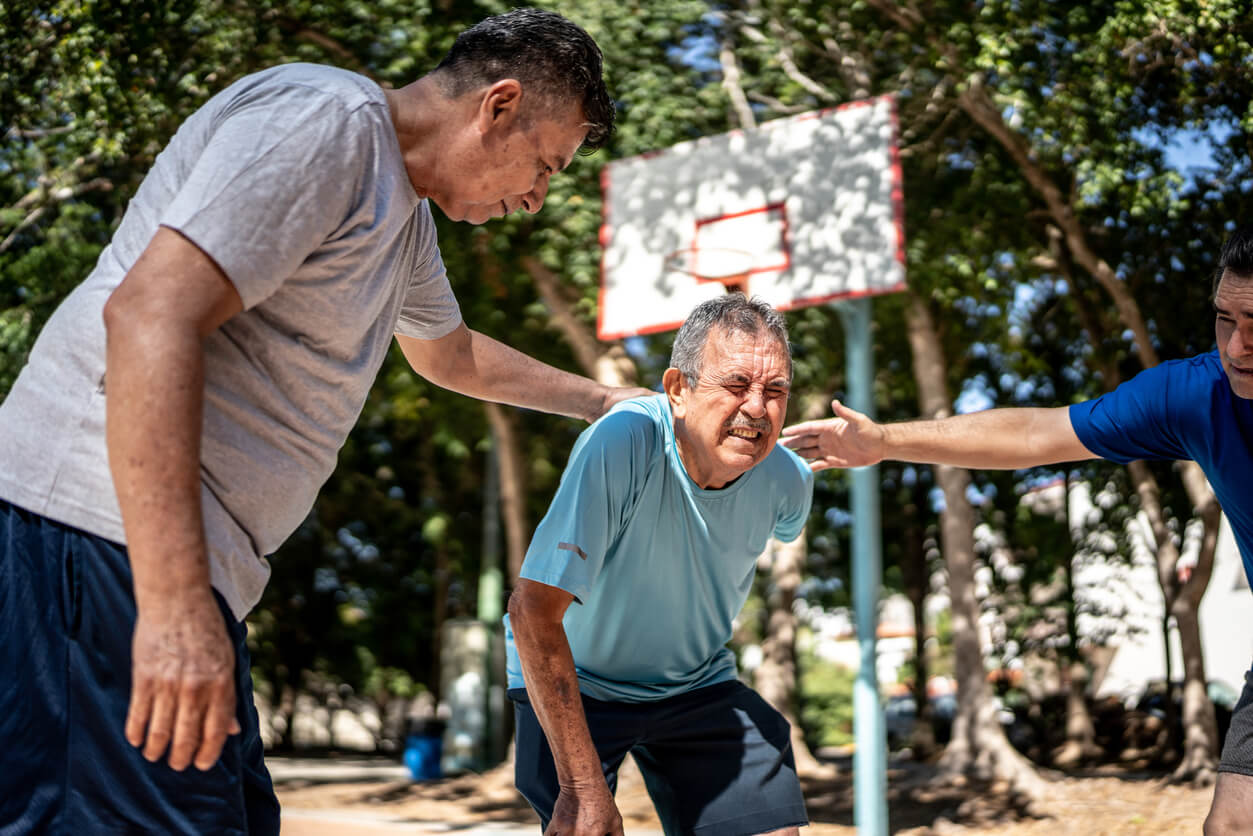
When we think about sports injuries, things like sprains, fractures, and muscle strains often come to mind. However, there’s a less talked about condition that can be just as debilitating for athletes: sports hernias. This condition, often overshadowed by its more common counterparts, is crucial for athletes and fitness enthusiasts to understand.
This article aims to shed light on sports hernias, guiding you through their causes, symptoms, diagnosis, and treatment options.
What is a Sports Hernia?
A sports hernia is a painful condition that occurs in the groin area of athletes. It’s a strain or tear in the muscles, tendons, or ligaments of the lower abdomen or groin.
Unlike a traditional hernia, a sports hernia doesn’t create a bulge but can cause significant discomfort, especially during physical activity. This condition is common in sports that involve sudden changes of direction or intense twisting movements.
Other factors contributing to the risk of developing a sports hernia include:
- Muscle imbalance
- Poor conditioning
- Previous groin injuries
Understanding the nature of a sports hernia is important for effective treatment and prevention, particularly for athletes and individuals who engage in high-intensity physical activities.
Symptoms of Sports Hernias
The symptoms of a sports hernia are often subtle at first but can gradually become more pronounced.
Key indicators include chronic pain in the groin area, which is exacerbated by sports activities or physical exertion and relieved by rest. Athletes might also experience:
- A sensation of weakness
- A feeling of a ‘pop’ in the groin area at the time of injury
As the condition progresses, the pain may become sharp, and activities such as running, twisting, or bending may become increasingly uncomfortable.
Diagnosis of Sports Hernias
Diagnosing a sports hernia can be challenging due to its subtle symptoms and the absence of a visible bulge typical in other hernias. The process usually begins with a detailed medical history and a physical examination focusing on the groin area.
Doctors may perform specific maneuvers during the examination to replicate the pain and pinpoint its location.
Imaging tests like MRI scans are often employed to rule out other conditions and confirm the diagnosis of a sports hernia.
Sometimes, diagnostic ultrasound or even exploratory surgery is used when the diagnosis is unclear. A thorough diagnostic process is essential to ensure proper treatment and recovery.
Sports Hernias Treatment Options
Treatment for sports hernias varies based on the severity of the condition and the individual’s specific needs.
Sports Hernias Non-Surgical Treatments
The initial approach typically involves conservative treatments, such as physical therapy.
Physical therapy focuses on strengthening and stretching the abdominal and thigh muscles to support recovery and prevent recurrence.
Pain relief may also involve medication or injections.
Surgical Procedures for Sports Hernias
In cases where conservative treatment fails to provide relief, patients may consider surgical intervention.
Surgery for sports hernias aims to repair the weakened area of the groin and reinforce it to prevent recurrence. The surgical approach can vary, often depending on the patient and surgeon’s preference, and the specific details of the injury.
Post-surgical rehabilitation is necessary and typically includes a gradual return to activity, with a focus on strengthening and conditioning to prevent future injuries.
Sports Hernias Prevention Strategies
Preventing sports hernias involves a multifaceted approach, focusing on reducing the risk factors associated with this injury. Key strategies include:
- Strength Training: Incorporating a balanced strength training program that targets both the core and lower body muscles can support the groin and abdominal areas.
- Flexibility Exercises: Regular stretching and flexibility exercises help maintain muscle elasticity, which is essential in sports that require sudden twists and turns.
- Proper Warm-Up: A thorough warm-up routine before intense physical activity is important. It prepares the muscles and joints, reducing the likelihood of strains and tears.
- Technique Improvement: Athletes should work with coaches to ensure proper technique in their sports. Correct movements can minimize unnecessary stress on the groin and abdominal muscles.
- Adequate Rest: Allowing sufficient time for rest and recovery between intense physical activities is critical. Overtraining can weaken muscles and increase the risk of injuries, including sports hernias.
- Equipment and Environment: Using appropriate protective gear and ensuring a safe training environment can also play a significant role in preventing sports hernias.
By integrating these strategies into training routines and daily practices, athletes can significantly reduce their risk of developing sports hernias.
These preventive measures not only safeguard against specific injuries like sports hernias but also contribute to overall athletic health and performance.
Personalized Treatment for Sports Injuries in Austin, TX
Knowing the signs and symptoms, understanding the diagnosis process, and being aware of the treatment options can make a world of difference for anyone who faces hernias. Prevention, as with many health concerns, plays an important role. The goal is not just to treat sports hernias but to foster a space where they are less likely to occur. Sports hernias are manageable, and with the right knowledge, athletes can continue to pursue their passion with vigor and confidence.
All-Star Orthopedics of Austin is here if you need personalized treatment for sports injury in Austin, TX. With Dr. Carolyn Hyde at the head of our team, we will ensure you get the care you need. You may call (512) 346-4933 today or submit an online appointment request form if you wish to schedule a visit with the top orthopedic surgeon near you.





